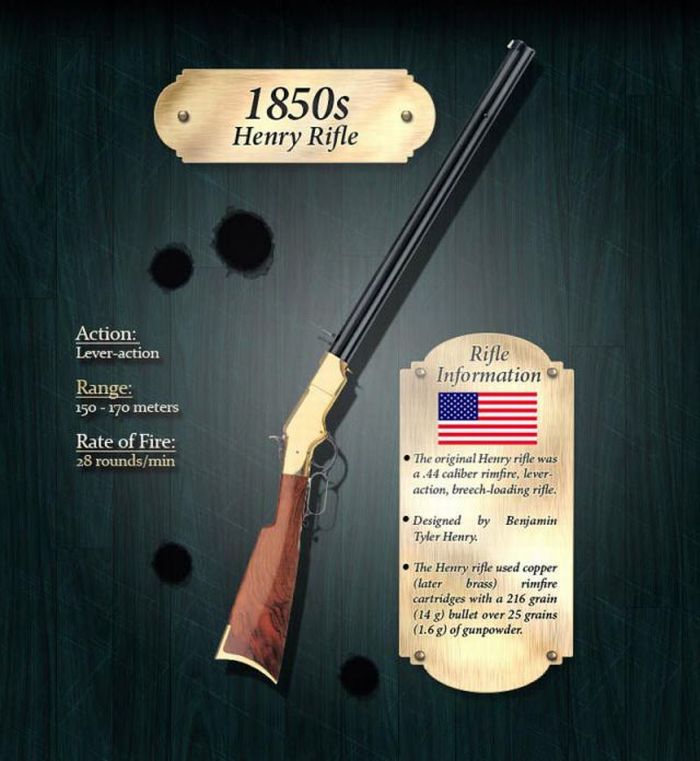|
|
The Evolution Of The Rifle
|
Rifles were initially single-shot, muzzle-loading weapons. During the 18th century, breech-loading weapons were designed, which allowed the rifleman to reload while under cover, but defects in manufacturing and the difficulty in forming a reliable gas-tight seal prevented widespread adoption. During the 19th century, multi-shot repeating rifles using lever, pump or linear bolt actions became standard, further increasing the rate of fire and minimizing the fuss involved in loading a firearm. The problem of proper seal creation had been solved with the use of brass cartridge cases, which expanded in an elastic fashion at the point of firing and effectively sealed the breech while the pressure remained high, then relaxed back enough to allow for easy removal. By the end of the 19th century, the leading bolt-action design was that of Paul Mauser, whose action—wedded to a reliable design possessing a five-shot magazine—became a world standard through two world wars and beyond. The Mauser rifle was paralleled by Britain's ten-shot Lee-Enfield and America's 1903 Springfield Rifle models. The American M1903 closely copied Mauser's original design.
• Range
Barrel rifling dramatically increased the range and accuracy of the musket. Indeed, throughout its development, the rifle's history has been marked by increases in range and accuracy. From the Minié rifle and beyond, the rifle has become ever more potent at long range strikes.
In recent decades, large-caliber anti-materiel rifles, typically firing 12.7 mm and 20 mm caliber cartridges, have been developed. The US Barrett M82A1 is probably the best-known such rifle. These weapons are typically used to strike critical, vulnerable targets such as computerized command and control vehicles, radio trucks, radar antennae, vehicle engine blocks and the jet engines of enemy aircraft. Anti-materiel rifles can be used against human targets, but the much higher weight of rifle and ammunition, and the massive recoil and muzzle blast, usually make them less than practical for such use. The Barrett M82 is credited with a maximum effective range of 1,800 m (1.1 mi); and it was with a .50BMG caliber McMillan TAC-50 rifle that Canadian Master Corporal Rob Furlong made the longest recorded (until 2010) confirmed sniper kill in history, when he shot a Taliban fighter at a range of 2,430 m (1.51 mi) in Afghanistan during Operation Anaconda in 2002.
|
|









